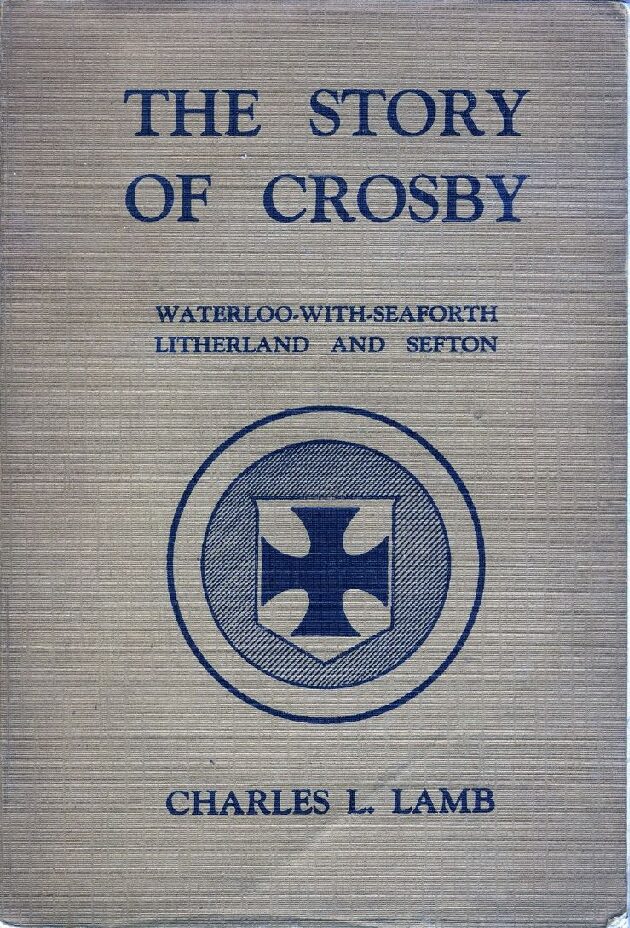
To give this book its full title: “The Story of Crosby Waterloo-with-Seaforth, Litherland and Sefton” by Charles L. Lamb is an interesting and thoughtful read and contains a chapter on Litherland. Published in 1936, it provides a detailed historical narrative of our local areas. It begins by exploring the geological and prehistoric origins of the region, highlighting significant features like the glacial “Boulder Stone” and remains of a submerged forest, providing a glimpse into how natural forces shaped the land. It traces human settlement from ancient Celtic tribes to Anglo-Saxon and Norse influences, showcasing the evolving names, cultures, and landscapes of the local communities.
The narrative proceeds into the medieval and early modern eras, focusing on the Norman conquest and the feudal systems that shaped local governance. Key families like the Molyneuxes and Blundells emerge as central figures, navigating political, religious, and social changes. The accounts of these families reflect broader national struggles, including the Civil War, religious persecution, and Jacobite uprisings, offering a wide view of England’s tumultuous history.
Significant attention is given to the transformation of these areas during the Industrial Revolution and urban expansion. The development of infrastructure, such as schools, churches, and councils. It highlights the transition from rural hamlets to thriving urban centers. The text also includes vivid descriptions of local customs, festivals, and community life, preserving the cultural heritage of the region.
The chapter on Litherland is a detailed historical account of the area’s development. It begins with its Norse origins, with the name “Litherland” from the Old Norse Liderlant meaning “slope of land.” The chapter highlights its transition through different eras, including its incorporation into the Norman feudal system under the Molyneux family, and its subsequent evolution into a distinct community within the Parish of Sefton.
The chapter details Litherland’s industrial growth, emphasising its strategic location along the Leeds and Liverpool Canal, which fostered early transport and trade. By the 20th century, Litherland became a hub for factories, including the Diamond Match Works and tanneries, while its infrastructure expanded with housing estates and new roads to meet the demands of a growing population. It also reflects on how modern transport innovations, such as railways and arterial roads, reshaped the area.
Litherland’s community development was marked by its religious and educational institutions. The first church, St. Philip’s, was established in 1861, and the area saw the creation of several schools to accommodate its growing juvenile population. Non-conformist and Catholic establishments also played significant roles, such as the Methodist Chapel in Wilson’s Lane and St. Joseph’s School, reflecting the community’s diverse cultural and religious heritage.
The challenges of urbanization are well described such as flooding caused by inadequate drainage, which was eventually resolved by a major drainage project in 1935. The narrative paints Litherland as a community transformed by industrialisation, resilient in overcoming hardships, and enriched by its cultural and historical legacy
The book overall concludes by connecting local history to broader themes of national progress and identity, illustrating how these communities adapted to modernization while retaining their unique historical character. Lamb’s meticulous research and engaging narrative aim to educate readers about the rich and layered history of their hometowns, blending local significance with broader historical insights.
The book is now out of copyright and is available for full download by clicking here.




